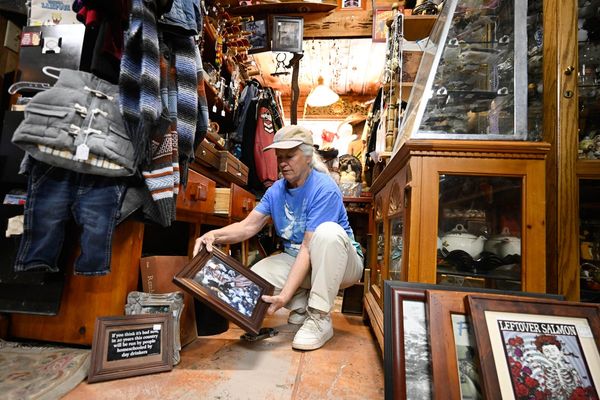
Despite several protests and requests over the last four years, the demand for full parliamentary access for journalists is yet to be met.
Earlier this week, journalists were restricted to a glass house in the parliament complex, with their protest compelling Speaker Om Birla to assure them of looking into some of their concerns, including a system of annual passes which was discontinued after Covid. Three days later, the Press Club of India had requested meetings with Birla and Rajya Sabha chairman Jagdeep Dhankar to argue a case for restoring full parliamentary access – “like it was in pre-Covid period to all accredited journalists and photojournalists”.
Meanwhile, a few pieces in prominent dailies have also underlined what the issue meant for press freedom.
In a column in The Indian Express on Friday, Neerja Chowdhury noted that “the ‘glass house’ that has come up for journalists near gate number 12 of the old Parliament building – its merits notwithstanding – is the latest symbol of the spaces that have been shrinking for the media”.
The piece noted that there are few spaces for the media in the new parliament, and “the number of journalists allowed in today is far fewer”. “What is striking is the absence of free spaces where politicians and media persons can sit down over a cup of tea/coffee and chat. Where dialogue can take place as it should in a vibrant, plural and cacophonous democracy. The glass dabba is also a reminder of the transition that has taken place from the ‘old’ to the “new” order, from the once vibrant, lively, high domed ‘Central Hall’ to a tiny, constricted ‘glass house’.”
It underlined that Birla has now promised to set up an all-party committee to address the media’s concerns. “There is no equivalent of a Central hall in the new Parliament building — it is ‘a Central hall’ that the Speaker should consider restoring to enable the media to access information and play its role in our democracy.”
Meanwhile, in an opinion piece in The Hindu on Friday, Vijaita Singh recalled her experiences as a journalist covering parliamentary proceedings.
“Last month, as I sat down in the press gallery of the Rajya Sabha to cover Prime Minister Narendra Modi’s speech, I noticed two pairs of eyes watching all the journalists gathered there. Young security personnel in grey civvies were sitting on their haunches at the edge of the gallery, closely following our hand movements as we took down notes. Two others stood by their side. The men took turns to observe us. This was perhaps the first time, after parliament security was handed over to the Central Industrial Security Force, following a security breach in December 2023, that journalists were being subjected to such intense scrutiny in the press gallery. Security personnel were present in the press galleries of the old Parliament building too, but they would observe us from a distance. What has changed is the scale of deployment and level of scrutiny.”
“Entry into the press gallery has been heavily restricted since COVID-19. Only two people from one organisation are allowed into the premises. After legislative business moved to the new Parliament building last year, separate entries were consigned for journalists, officials, and Members of Parliament (MPs). This was not the case in the old Parliament building. Today, journalists are frisked four times and have to walk down a long windowless corridor dotted with security cameras in order to reach the gallery.”
The piece noted that it’s “not only Parliament that is squeezing the space accessible to journalists”. “At government functions, the refreshments corner, where reporters could meet officials for candid conversations, has also been blocked over the last decade. Usually, the Minister or the chief guest would interact with journalists in these corners after the function ended. Now, security personnel are stationed so that journalists do not dare enter the VIP enclosure.”
Meanwhile, in an editorial earlier this week, the Times of India stated that the “image of press in a glass cage in Parliament speaks to a serious grievance”.
“Sometimes an image spreads a story, as if it’s new, even when it’s not. An image of journalists protesting from inside a glass enclosure in Parliament has gone viral this week. Its symbolism is compelling. And it draws attention to an issue that deserves a lot more of the public’s attention, because it concerns the free flow of information to them. For journalists who cover the proceedings of Parliament, most of the access that was taken away in March 2020, never got returned. Malls, cinema halls, MPs…Covid restrictions are history everywhere and for everyone. But media freedom to report from Parliament remains heavily fettered.”
Parliament’s presiding officers must ensure press access goes back to status quo ante, it said.
Newslaundry has extensively reported on the impact of restricted media access to parliament. Watch here and read here.
Complaining about the media is easy. Why not do something to make it better? Support independent media and subscribe to Newslaundry today.
Newslaundry is a reader-supported, ad-free, independent news outlet based out of New Delhi. Support their journalism, here.







